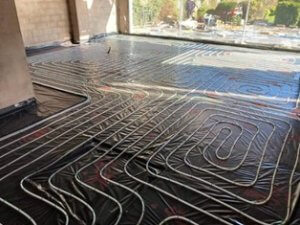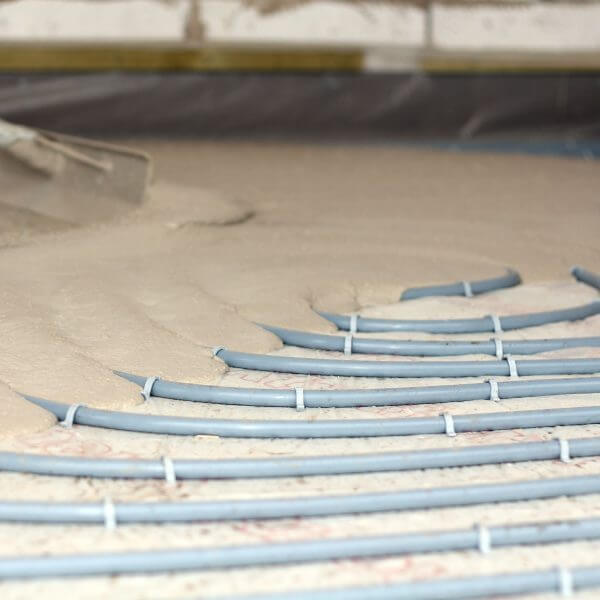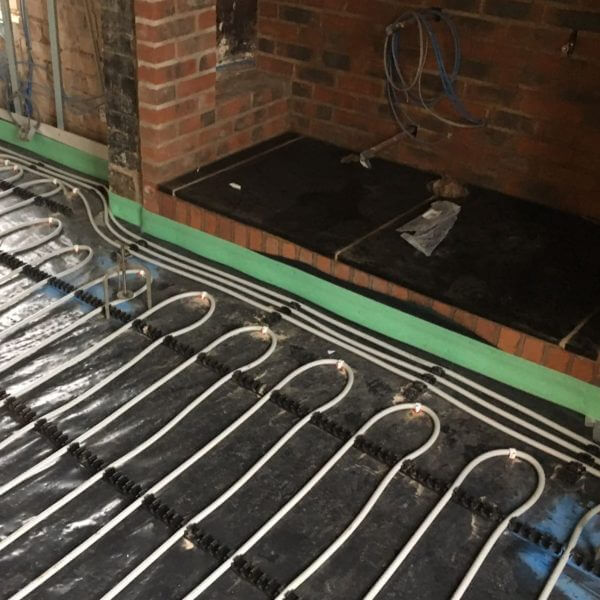Is Underfloor Heating Better Than Radiators?
Yes, underfloor heating is widely considered to be a better option than heating systems that use radiators as it is generally safer and more energy efficient and thus cost-saving.

Energy Efficient
Underfloor heating is a more efficient method of heating than radiators. Radiators heat a room by emitting a high temperature from a small surface area which then circulates upwards, heats the ceiling space above your head and then falls back down. By the time this heated air has returned to floor level it is cooled, making it an inefficient heating system. Underfloor heating uses lower temperature water circulated through plastic pipework with a larger surface area beneath the floor producing a comfortable heat which then rises to around 8 feet, efficiently heating the space we inhabit and not wasting energy heating the ceiling space.
Safer Than Radiators
Underfloor heating is also safer than radiators as there is no risk of burning yourself; underfloor heating systems do not get as hot as radiators and they also do not kick up dust as radiators do.
Can Underfloor Heating Replace Radiators?
In most cases, yes. Underfloor heating is not just replacing radiators in newbuilds, older buildings can be retrofitted with floor heating circuits. There are many heating systems available which can be applied to several types of historic floor constructions. Generally, the more modern the building, the easier it is to install.
Not all older buildings can be properly fitted with underfloor heating. The primary limiting factors of installing a new heating system in older buildings is room height, the nature of the floor construction, and the historical value of the property.
With most heating setups, the floor height will be raised, which may not be suitable for homes built with low ceilings. Some floor setups, especially properties with timber ground floors, may be difficult to install typical underfloor heating systems. However it is possible, such as by installing piping in the void between floorboards.
Lastly, listed properties of historical value may not allow for underfloor heating without prior consent or consultation. This is because disruption to the historic fabric of the property must be kept to a minimum.




